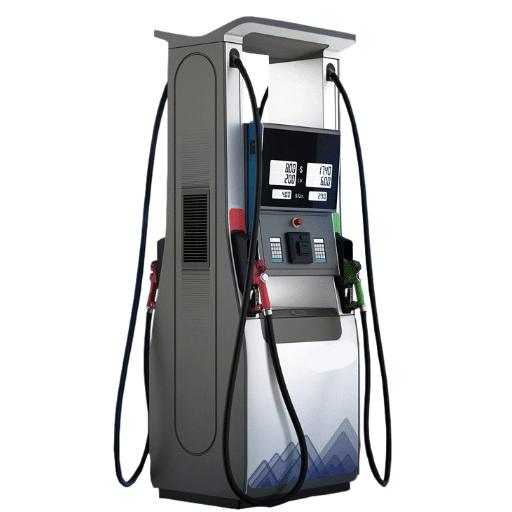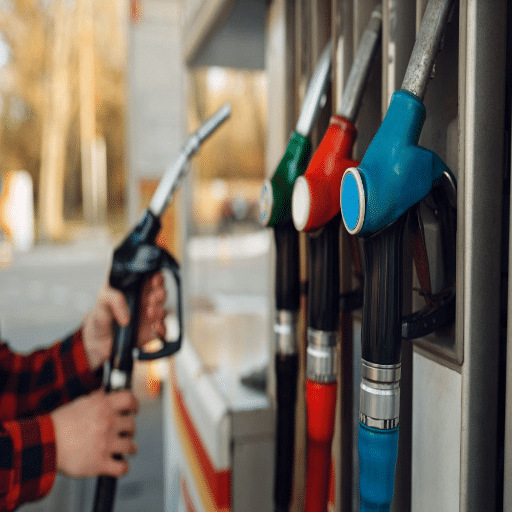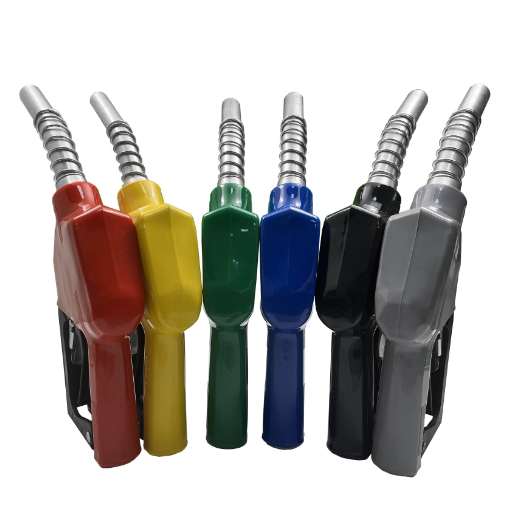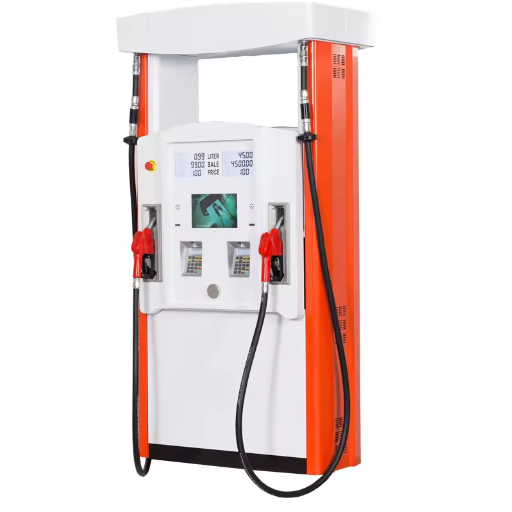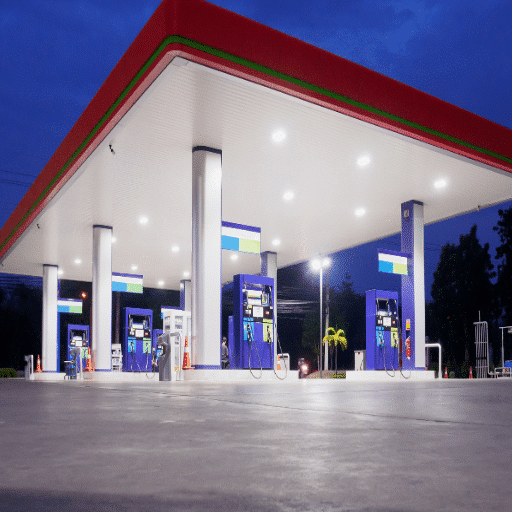Gas stations are common in our daily lives, whereas the design details are often overlooked—until we question them. These are the disproportionately lofty roofs that oversee the pumps and parking lots. But have you ever pondered why gas station roofs had to be made that way? Was there an aesthetic consideration, or do these towering canopies have a use? In this blog post, we explore the rationale for elevated designs, delving into the juncture of functionality, safety, and even ecological consciousness that envelops this seemingly simple architectural choice. Keep reading to unravel an intriguing reason for such common infrastructure.
Understanding Gas Station Structures
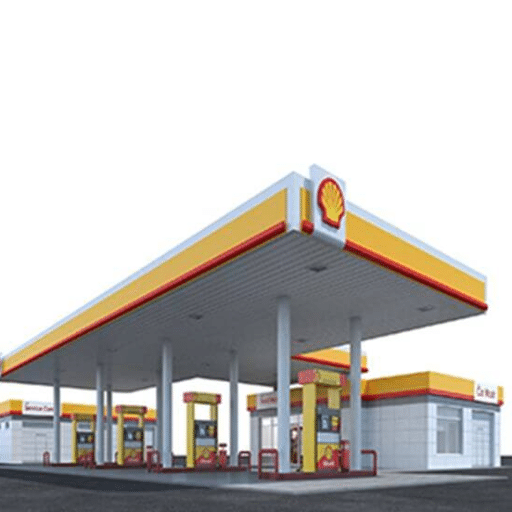
Gas station roofs, or canopies, are primarily designed for practical purposes. Their foremost function is to shelter customers and the fueling equipment from the weather, be it rain or snow, or too much sunlight, ensuring the whole operation has a safer and more comfortable experience. Lighting is embedded in some canopy designs to enhance night visibility and improve safety and security. Many canopies are built to allow the entry of big vehicles such as trucks and vans. After that come designs focusing on rainwater collection or solar energy systems, taking a more modern view of sustainability.
The Importance of Roof Height
Roof height is of the utmost importance regarding functionality, safety, and efficiency. For example, higher ceilings in warehouses or other commercial settings promote air circulation and restrict heat from building up in the area, making it energy efficient. Research shows a higher ceiling positively affects hot climates’ temperature control and cooling costs.
Furthermore, roof height must fit the space requirements of specialized equipment or particular operations. For instance, certain manufacturing plants must unpack large machinery, cranes, or conveyors, and thus, roof height becomes a vital consideration in optimizing workspace utilization. In the same way, parking canopies, or transit hubs with upright roofs, allow enough clearance for big vehicles, thus ensuring safe operation.
Data also highlights the advantages of great roof heights for lighting efficiency. More height allows the installation of efficient lighting, which helps disperse light evenly across spaces, thereby cutting down the usage of such facilities on artificial lighting itself. This brings up good visibility and reduced energy costs, paving the way to green buildings.
Using roof height can increase vault capacity, comfort, and energy performance, efficiently fulfilling practical requirements while considering environmental aspects.
Common Materials Used in Gas Station Canopies
Gas station canopies are often made of strong, weather-resistant materials for longevity and safety. For example, typical materials are:
Steel—If steel is used, the architect normally selects it for framing and structural components because of its strength to withstand heavy loads. Steel is usually coated to prevent corrosion and stabilize it for long-term use.
Aluminum—Light and rust-proof aluminum is frequently used for canopy panels or fascias. Such materials are flexible and seem modern, hence their good practicality and aesthetic appeal.
Composite Materials—These are extra-durable yet lightweight materials that can be tailored to suit design needs. They also keep the canopy looking clean and professional for an extended period.
The canopy is often given an attractive reflective finish or is pre-coated for visibility, branding, or design needs, lessening its upkeep. Properly selecting materials is fundamental for withstanding severe environmental conditions while maintaining intended use and safety.
Design Considerations for Gas Station Roofs
In gas station roofing design, multiple essential factors are considered to attain function and aesthetics. The first factor to consider is the weather: The roof has to provide a safe and durable shelter in adverse conditions of rain, snow, wind, and UV rays. Standard materials are aluminum or steel, with some paint or coating to prevent corrosion and ensure maximum durability. Data shows that steel can last about 50 years, with proper maintenance, making it less expensive for many owners.
Energy efficiency is also prominent on the consideration list. Today’s gas station roofs can support various energy-conserving options, from reflective roofing materials to solar panels. Studies suggest that reflective roofing materials may reduce cooling energy costs by up to 20% in hot climates. In contrast, solar panel integration offers a green energy source to offset other operational costs. For instance, a 10 kW canopy solar array could generate more than 12,000 kWh per year, subject to its geographical placement.
Safety comes next on a gas station roof checklist for some jurisdictions. Safety measures should observe fire safety criteria for, or at least include, those areas where flammable fuels are present, including drainage systems, to avert water pooling that might damage the roof or result in hazards. Another standard safety requirement is the cladding of LED lighting onto the roof for night operations. LEDs are usually energy-efficient and enjoy a long lifespan.
Finally, making the whole design a canvas for branding endeavors and aesthetics is essential. The gas station roof design features, in many ways, extend the suggestions of the company brand. Styles such as clean lines, striking intense colors, or intriguing geometric forms can make a station recognizable and appealing to its customers with a lasting visual imprint.
Drying off shelters in a gas station would involve placing energy-efficient roof designs from blueprints and creating a very safe and visually attractive structure.
Features of Gas Station Canopies
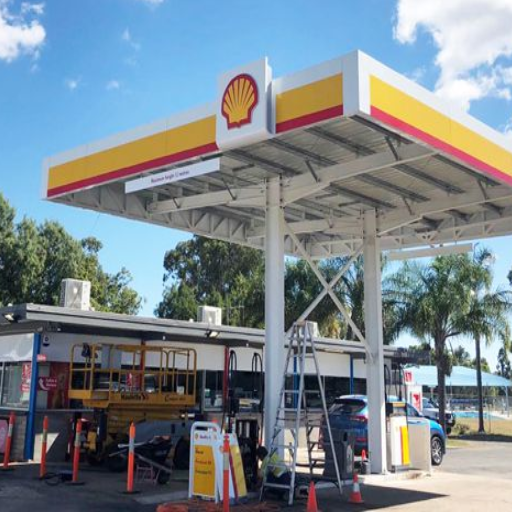
The design of gas station canopies is oriented toward utility and aesthetics. Among the primary features are solid materials capable of withstanding intense climatic conditions and inbuilt lighting systems to enhance visibility and safety. Efficient drainage facilities are provided for rainwater management. Other green technologies, such as solar panels or LED lights, can be adopted to cut costs and enhance sustainability. Also, the design could be customized to incorporate branding elements such as logos, colors, and other architectural styles to build a distinct image. These are some of the features crucial in satisfying customer and operator needs.
Flat Roof vs. Sloped Roof Designs
Considerations on function, costs, climate, and appeal regarding flat versus sloped roof possibilities come to the fore. Flat roofs, typically cheaper during construction, allow an easy setup of solar panels, HVAC air-conditioning, or rooftop gardens. Being the best in mild climate areas, flat roofs need an adequate bottom drainage system to avoid water from being stagnant and dripping into the layers over time. Maintenance is the key to longer life.
On the contrary, sloped roofs are superior in removing rain and snow, making the roof suitable for a location with frequent rain and snow. They are more durable and last longer because water drains away naturally. Meanwhile, sloped roofs will be more expensive and create fewer space-limiting opportunities than flat roofs. Ultimately, the requirements of function, environment, and budget consideration are considered to make an appropriate choice. Against this backdrop, combining these factors promises the best design for utility and long-term performance.
Advantages of a High Canopy
This architecture and environment suite offers an array of benefits. Greater ventilation and air movement would help lower indoor temperatures, requiring less artificial cooling. Enhanced natural ventilation from high ceilings in buildings has resulted in up to 20% energy savings, sparing the environment.
Besides allowing more daylight to enter spaces, high canopies brighten the workspace to an extent that greatly uplifts the atmosphere. Daylight stimulates productivity and general well-being. For example, studies strongly correlate an increase of about 15% in mood and productivity with greater natural light.
Ecologically, high canopy roofs offer opportunities to integrate green roofing systems or solar panels, capitalize on energy usage, and promote biodiversity.
Moreover, these spaces are adaptable for large-area spaces, such as public halls or warehouses, where vertical space maximization is paramount for storage or equipment accommodation.
By marrying technological advancements with thoughtful planning and construction, high canopies matter in their functional appeal and equally in protecting the environment and energy efficiency.
Impact on Customer Experience
High canopy designs’ spacious, well-lit ambiance will significantly enhance customer experiences. Research reveals that height and open space facilitate a feeling of freedom and lessening of the crush, essential for customer satisfaction in retail, hospitality, and industry spaces. Incidentally, canopies with efficient or natural lighting make for good visibility and a pleasant ambiance.
Then, whichever businesses consider more practical canopy options like green roofs or solar-integrated systems will thus endorse this growing consumer focus on sustainability. Reports state that over 70% are attracted by eco-conscious brands, and sustainable features heavily influence purchasing decisions and brand loyalties. Therefore, through these installations, businesses reduce operational costs, foster a positive brand image, guarantee consumer goodwill, and establish long-term relationships.
The Height of Gas Station Roofs
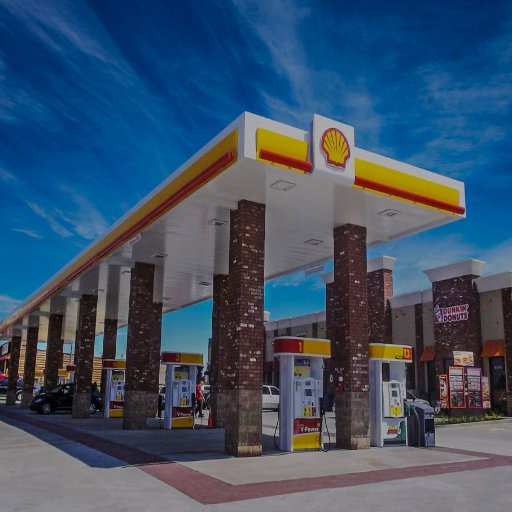
Gas stations’ canopy heights typically vary between 13 and 16 feet to shelter all vehicle sizes, including big trucks and vans. Adequate clearance and a structurally efficient design are considered in the standard. Local building codes and regulations might come into play regarding maintaining a particular height to ensure safety and good working conditions.
Factors Influencing Roof Height
Several factors dictate the height of gas station roofs, chief among them being practicality, safety, and regulation. One way cranes dictate height is the vehicle being served by the station. Gas stations must cater to various vehicle types, including SUVs, pickup trucks, and large commercial vehicles beyond delivery trucks and RVs. For example, the tallest semi-truck cab height is approximately 13 feet, with roof clearances between 13 and 16 feet to allow for safe maneuvering.
Weather conditions form yet another vital factor for consideration. Higher roofs may be required in areas prone to heavy snowfall accumulation because lower roofs will pose a hazard. That ensures that CLR meets the necessary clearance where snow lands to minimize structural stress. Ventilation and fire safety requirements also matter. One may think that depending on roof height will create height disparities of the airflow, where fuel fumes may become trapped or a fire hazard during a fueling process.
Local building codes and zoning laws heavily influence roof height. Regulations may stipulate measurements to promote uniformity, structural integrity, and safety compliance. Depending on the station’s branding and goal for energy efficiency, design and aesthetic preferences for signage or solar panels add to the height requirement.
When weighing these factors, they settle on the highest roof height, ensuring that the functionality, safety, and regulatory aspects remain favorable while supporting various vehicles and varying environmental conditions.
Design Considerations for Flat Roofs
Flat roofs provide a neat and modern look while optimizing usable space for both commercial and residential purposes. Contrary to what is often assumed, flat roofs must be designed with utmost care to ensure longevity, energy efficiency, and proper drainage. One critical consideration is the slope of the roof; contrary to their name, flat roofs are never truly flat but instead keep a slight incline for the duration of the structure—usually between 1/4 and 1/2 inch per foot for optimum drainage of rainwater so that water does not stand to damage the roof till after a couple of years.
The choice of materials is equally important in a flat roof system. The standard options are EPDM (Ethylene Propylene Diene Monomer) rubber, TPO (Thermoplastic Polyolefin), and modified bitumen. While EPDM remains the option based on economic considerations and the ability to withstand weathering, TPO markets itself as an energy-efficient material with the further benefits of high solar reflectivity, which can significantly reduce the cooling cost of a building. Modified bitumen applied in layers, on the other hand, offers greater durability, particularly in areas of extreme weather conditions.
Insulation is another key factor since natural insulation is less in flat roofs than in pitched roofs. Selection based on thermally superior materials like rigid foam boards should promote energy savings and improve indoor comfort. Green roofs and solar panels also enhance energy efficiency.
Drainage systems are designed in detail and adapted to various rainfall intensities dictated by climatic conditions. Areas with heavy rainfall tend to have drainage openings quite a bit larger or in greater numbers to ensure accumulated water does not pose any structural threat.
Finally, regular flat roof maintenance must be conducted regularly, significantly extending its serviceability. Such maintenance includes checking the roofs for cracks, clearing the path of water flow for debris, and looking for early signs of water ingress so minor issues may be resolved before they become major. These measures will keep a flat roof hub functional, safe, and efficient during its lifespan.
Impact on Customer Experience
The design and maintenance of flat roofs significantly influence customer satisfaction and the overall customer experience. Proper insulation by a well-maintained flat roof results in energy expenses and heating or cooling prices becoming another variable for giving in to customer extortion in return since industry leaders have reported that energy-efficient roofs reduce energy consumption by as much as 20%, thus being a more cost- and environmentally friendly option for the building occupant.
Water pooling is countered by proper drainage, which is, in fact, a negative feature in watersheds, for instance, where delayed construction time incurs greater repair costs, it significantly inconveniences the customer! The other option includes installing an advanced roofing system using PVC or TPO membrane materials that offer greater durability. These membranes, with service life ranges and proper maintenance estimated at 20-30 years, provide a solemn promise of long-term reliability.
Customer feedback shows aesthetics are crucial in roofing, especially for commercial buildings. Cosmetic appeal with one well-maintained flat roof will strengthen the brand image and attract more clients, especially in retail or hospitality. It illustrates how investing in quality flat roofs and maintenance contributes to structural integrity, customer satisfaction, and allegiance.
Safety and Functionality
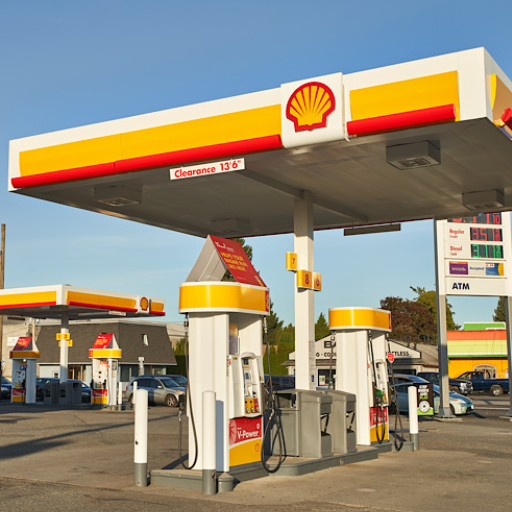
The principle behind flat roofs is that safety and functionality must be prioritized: industry standards must be adhered to, and user needs must be fulfilled. Drainage systems should ensure that water does not pool on the surface because otherwise, the structure could come under stress, which is a hazard. Flat roofs should also be constructed with durable, fire-resistant materials to lessen the dangers and guarantee longevity. Inspection and maintenance must be performed regularly, so any possible defects can be addressed as soon as practicable before the problems become arduous and expensive – this could include leaks, cracks, or weak spots. Learning to focus on these points will make flat roofs a safe, effective, and dependable solution for buildings.
Weather Protection and Durability
Flat roofs are designed structurally to withstand different weather conditions, from intense sunlight to heavy rain and snowfall. Modern-day roofing materials, such as TPO, modified bitumen, and PVC membranes, exhibit excellent resistance against UV rays and extreme temperatures, and thus, they do not degrade with time. Also, improved waterproofing methods have been developed, thereby treating the top complaint among owners of flat roofs: leaks.
In snow-heavy areas or those with violent sunsets, good drainage with scuppers and interior drains is needed to prevent water pooling, which can cause the wood to weaken or collapse. Data reveal that seamless membranes and reinforced edges enable a flat roof to last anywhere from 20 to 30 years, depending on maintenance efforts. High-quality insulation such as polyisocyanurate or expanded polystyrene further boosts the energy efficiency profile of a building; this directly helps regulate indoor temperature and cuts heating and cooling costs. Thus, integrating long-lasting, weatherproof, and energy-efficient solutions will guarantee peak long-term performance for any flat roof.
Ventilation and Airflow in the Canopy
Adequate ventilation and airflow in a canopy are paramount to ensure structural stability, energy efficiency, and indoor air quality. It is the worst enemy when moisture escapes through vapor and moisture diffusion. An inefficient ventilation system may let moisture build up inside the canopy, leading to mold growth, structural deterioration, servicing problems, and even indoor air quality issues. Canopies with superior ventilation can commonly reduce temperatures inside by 5 to 15°F during hot weather, affording comfort to reduce the consumption of air-conditioning systems.
Different design features, including ridge vents, soffit vents, and exhaust fans, guarantee continuous air flow, thereby preventing heat and moisture buildup. More cutting-edge methodologies, like stack ventilation, employ natural convection by permitting cool air ingress from lower elevations, while warm air exits the canopy from its uppermost points. Thus, it is energy-efficient and prevents material deterioration in the long term.
Furthermore, some openings are explicitly positioned to direct airflow. Doing so further encourages passive cooling and engenders a sustainable and binding eco-friendly environment. Effective ventilation systems provide an excellent lifespan to the canopy structure and ensure balanced air exchange, promoting equally healthy and comfortable indoor spaces.
Lighting and Visibility Enhancements
Good illumination based on light is necessary for the usability and safety of any constructed environment. These advanced lighting solutions, including LED systems, provide a nice tradeoff between energy efficiency and operational costs. To verge on the magic standard in terms of quality, LEDs consume about 75% less energy and last 25 times longer than traditional incandescent bulbs, proving to be a relatively inexpensive and green alternative.
Lighting should be designed to improve visibility while counteracting glare and shadows. Task lighting, if designed well, will improve performance in work areas, and ambient lighting distributed evenly can create an atmosphere of comfort. Intelligent lighting systems will use motion sensing and dimming to control lights automatically and adapt them to situations, saving up to 35% of energy.
For outdoor illumination, using high-lumen, weather-proofed luminaries is essential in providing requisite visibility in such low-light scenarios while standing the test of their environment. Such technologies also appear to curb light pollution, a solution that could keep pace with utmost protection for pedestrians and vehicular mechanisms. So, spaces can be more efficient without compromising comforts and sustainability by using intelligent lighting systems in conjunction with good design.
Trends and Innovations in Gas Station Design
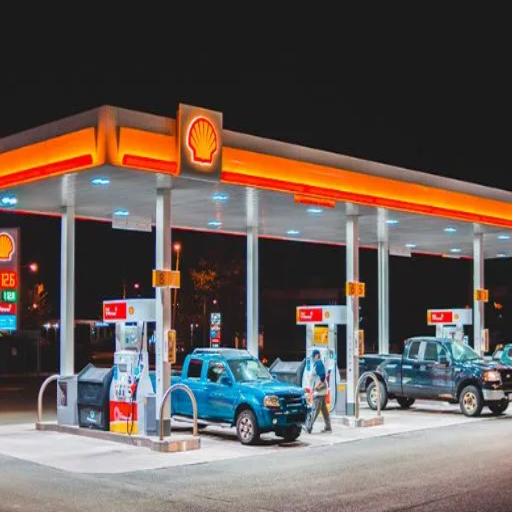
Efficiency and Sustainability: Modern gas station design considers sustainability, using energy-efficient construction materials and renewable energy sources. Solar panels and LED lighting can cut down on operational costs and lessen environmental impacts. These advances are all in sync with the global thrust towards greener practices.
Smart and Connected Systems: Smart technology integration is making gas stations connected hubs. With the automated fuel pump system, mobile payment options, and IoT-enabled systems, customers check out fast while the business operates efficiently. Keeping track of maintenance in real time, these systems have shown predictive potential and have proven to be a boon in gas station management.
Customer-Centric Experiences: Today, gas stations morph into multi-purpose places. Many offer ancillary services, such as EV charging stations, convenience stores, and dining areas. This customer-centric approach aims to build a homey ambience, demanding frequent visits and lengthening patrons’ dwellings.
Electric Vehicle Infrastructure: The rise of electric vehicles gave momentum to the inclusion of EV charging at gas stations. This transition underscores the pressing need to adapt to changing consumer needs while lessening dependence on fossil fuels, paving the way for a more sustainable mode of transport.
Modern Designs of Petrol Station Roofs
The modern petrol station roof combines aesthetics and functionality while reflecting the latest architectural concepts and technology. One primary trend is incorporating solar panels atop the roofs so that stations can generate renewable energy and curb their carbon footprints. For example, several modern petrol stations have photovoltaic systems that output thousands of kilowatt-hours of electricity annually, supporting the station’s operating costs and nearby EV charging points.
Another approach involves lightweight, weatherproof materials such as aluminum or composite panels. These materials are good because they sustain longevity, reducing upkeep costs. These canopy structures are often sculpted with a slight angular or curved aesthetic to lessen the impact of heavy rains through better runoff.
Including LED lights within the roof design increases energy efficiency while providing smooth yet bright light at dawn and dusk, ensuring that customers can easily practice safety and visibility measures. Specific forms of dynamic lighting are even more sophisticated in that they adjust brightness according to the level of natural light available, reducing energy use even further.
Green roofs, partially or fully covered by vegetation, are being experimented with in some cases. These roofs provide better insulation and absorb less solar heat, in addition to assisting stormwater management and improving air quality.
Hence, it is not only a modern development for petrol station roofs but also brings sustainability and innovation concepts to life, showing how the triple intersection of design, technology, and environmental conscience can be perfectly aligned.
Sustainability Practices in Roof Construction
If the topic turns to sustainability in roofs, my focus lies in energy-efficient materials and designs. This includes renewable resources, recycled or sustainably sourced materials, and green technology implementations such as solar panels or reflective coatings to reduce energy consumption. Further, from a design perspective, it focuses on boosting insulation and encouraging natural ventilation so that dependence on heating or cooling systems looks minimal. The promotion of these parameters, I believe, will result in a roof that is resilient while remaining environmentally friendly.
Future Directions for Gas Station Canopies
Technological advancements, sustainability targets, and an evolving energy scenario will shape the future of gas station canopies. Among the key trends is the integration of solar panels in canopy designs. Solar-powered canopies produce renewable energy onsite, thus reducing the gas station’s need for electricity supplied by the grid and further cutting operational costs. Studies reveal that a standard gas-station canopy with solar panels installed can generate about 30-50 kW of energy that could be used to power lighting, EV chargers, or even the central facility.
Another aim is to adopt modular construction methods for canopies. Prefabricated structures halve construction time and reduce material waste, enhancing environmentally friendly practices. Moreover, these modular systems can be upgraded easily with technological advances, particularly with the increasing prominence of electric vehicle (EV) charging infrastructure. With projections of global EV market growth at 22.5% annually till 2030, gas station canopies must gear up by incorporating features like fast-charging hubs, dynamic LED signage, and smart sensors.
Advanced materials like translucent photovoltaic glass and rigid composites will also emerge in the arena of aesthetics and functionality for canopy designs. They add to the energy efficiency, weather resistance, and durability of canopies. Such advanced features will support gas stations transitioning to multi-functional energy hubs that provide green energy services alongside conventional fueling. These transformations have begun implementing the future paradigm of planned, sustainable gas station canopies.
Reference Sources
Frequently Asked Questions (FAQs)
Why Are Gas Station Roofs Usually High?
Gas station roofs are typically designed to be high for several reasons, including accommodating various vehicle types and providing clear visibility for drivers. The height not only ensures that larger vehicles, such as trucks and buses, can refuel comfortably but also enhances the overall convenience for customers. Additionally, the elevated roofing helps reduce the risk of accidents by creating a safer environment for patrons and employees. Moreover, the high roofs facilitate proper drainage, preventing water accumulation that could lead to structural issues. In many cases, using a steel structure or concrete materials contributes to the strength and durability of these roofs, ensuring they withstand harsh weather conditions.
What Factors Influence the Height of Gas Station Roofs?
Multiple factors, including the need for safety and functionality, influence the height of gas station roofs. One primary consideration is accommodating larger vehicles requiring more vertical refueling space. Moreover, the design aims to create an enclosure that protects customers from elements like rain and snow while filling up their tanks. The roofing must also be high enough to properly install electrical systems, such as lighting and signage, which are crucial for visibility. In addition, the thickness of the materials used, whether steel or concrete, plays a role in determining the overall height of the structure. Ultimately, these features work together to create an economical and practical solution for gas stations.
How Does Roof Height Reduce the Risk of Explosive Situations?
The height of gas station roofs is a critical design element that helps reduce the risk of explosive situations, particularly in the presence of flammable liquids like gasoline and diesel. A higher roof allows for better ventilation, essential for dispersing any vapors that may accumulate during refueling operations. This design consideration helps prevent dangerous pressure build-up that could lead to explosions. An elevated roof structure can also accommodate safety measures like fire suppression systems and emergency exits, further enhancing safety protocols. By maintaining a safe distance from the fuel dispensers, the roof height contributes significantly to minimizing potential hazards associated with petroleum products.
Why Are Gas Station Roofs Built with a Grid Structure?
Gas station roofs often feature a grid structure that provides strength and stability. This design allows for weight distribution across the roof, making it capable of supporting heavy loads such as snow and equipment. The grid structure also facilitates the installation of additional features like signage and lighting without compromising the roof’s integrity. Utilizing materials such as steel or reinforced concrete in the grid design ensures that the roof can withstand various environmental pressures. Furthermore, this architectural approach can be more economical, reducing the material needed while providing a robust and durable roof. Overall, the grid structure is a practical solution that enhances the functionality of gas station roofs.

